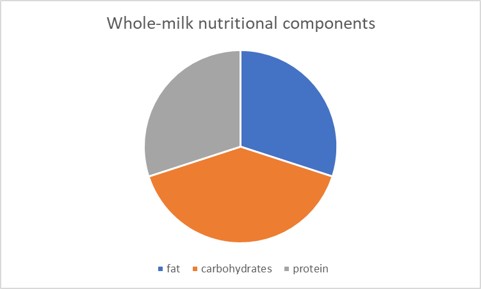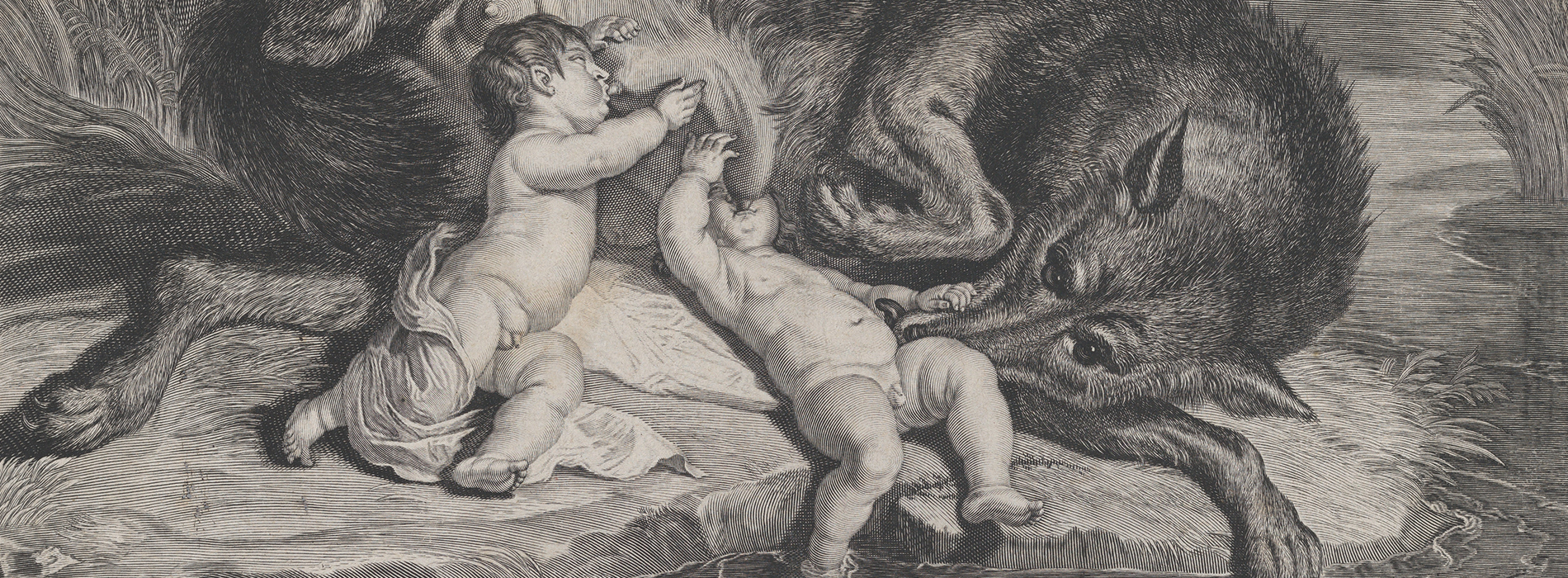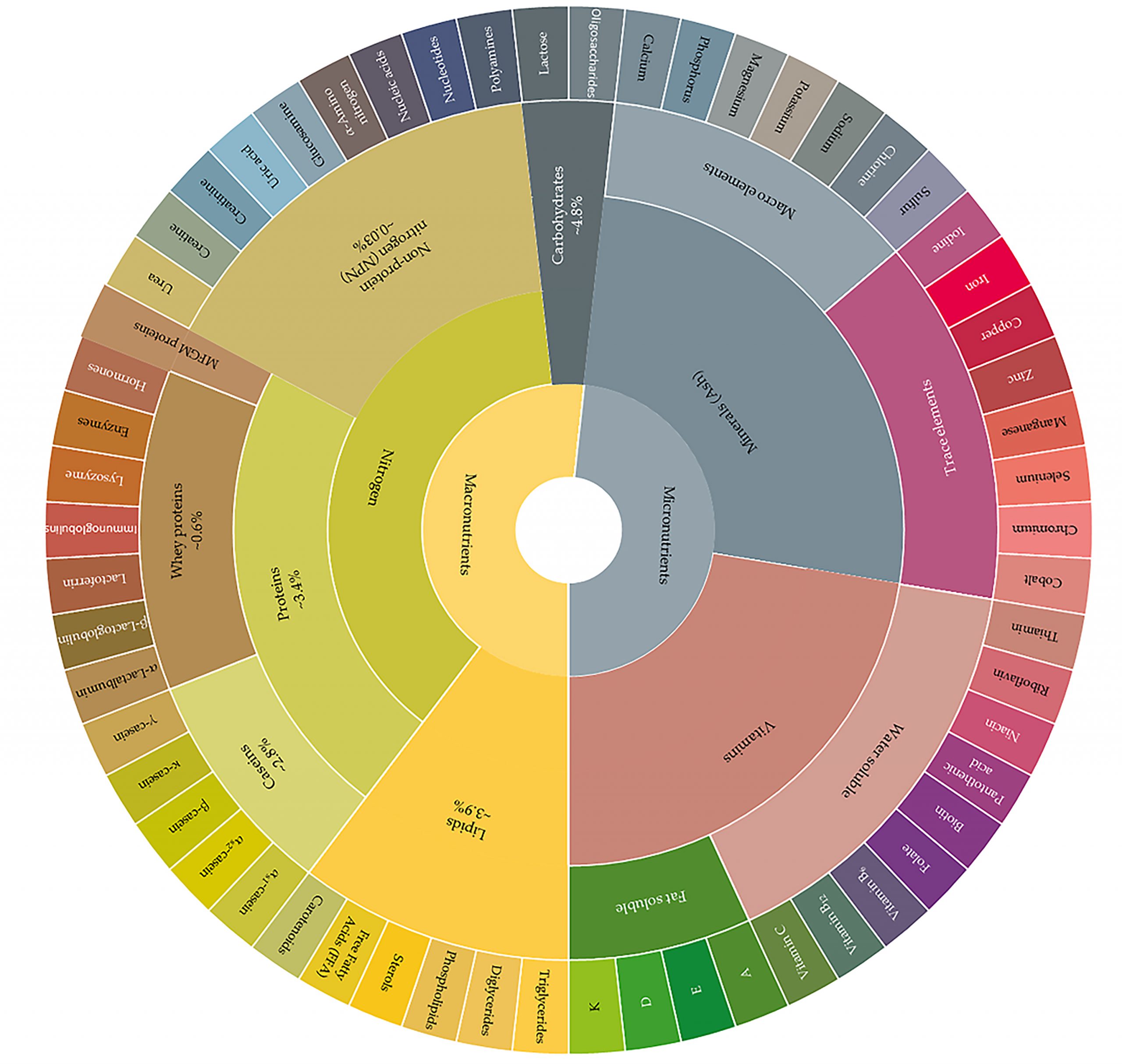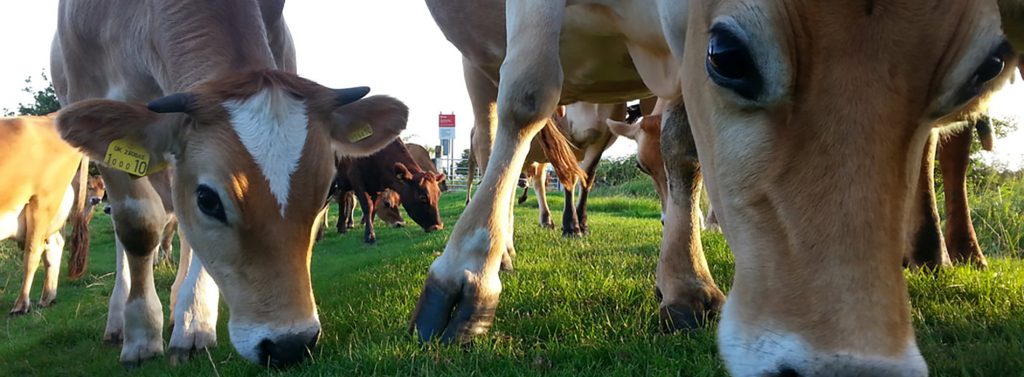There is so much to say about real, organic, creamy, grass fed milk, so many myths to be busted and so many nutritional benefits to be described, that my draft articles for this blog could wallpaper the room. I’m particularly perplexed as to why a freely available, sustainable, humanely harvested and super healthy drink has gained such a bad reputation so quickly. I think this is related to ignorance of farming in general and animal husbandry in particular. But I also wonder whether the ill-informed vitriol we see (and which I expect to get when I publish this) is related not simply to ignorance, but to a psychological distaste for lactation among certain people. I guess that Freud would have a lot to say about it! In my view, we all should know what we are eating and how it is produced. We should then be able to make up our own minds, bounded by strong legislation that protects human health and animal welfare.
As a clinical nutritionist I know that good quality milk is one of natures bounties. And as a caring person, I know that I would not feel happy drinking industrially produced milk substitutes, or milk from factory farmed cows. But I know that the milk that most of us are forced to drink neither possesses the health-giving qualities of fresh, whole, raw, unpasteurised milk, neither is much of the mass market milk, ethically produced. So, everything in this article refers to best practice, organic, grass fed, unpasteurised milk. I apologise in advance if you think that is being exclusive. But I simply don’t accept the fact that milk needs to cost £1 a litre to be affordable. I feel it is beholden to all of us to make an example, vote with our feet, and to buy milk from the very best, local supplier we can find.

Milk Facts
The statistics I quote below come from the Widdowson and McCance nutritional tables – industry standard nutritional information, the Dairy Council and a website called Raw Milk Facts. There are very few scientific papers to refer to regarding raw, organic, grass-fed milk (the crème de la crème?), but where I can I give you some references as evidence. In the absence of a good all-round paper, Raw Milk Facts does a good job and is well referenced. But for the purposes of full disclosure. Raw Milk Facts is pro-raw milk, the Diary Council is pro-milk and so am I.
Why is milk such an amazing substance?
Mammal’s milk, whether we are talking mother’s milk, cow’s milk, goat, yak, buffalo, donkey or mares’ milk are all slightly different. But they all have one thing in common. They are high in naturally produced nutrients, including vitamins and minerals. Many foods contain healthy carbohydrates, or healthy low-fat proteins, or ‘good’ fats – but milk seems to have been naturally endowed with generous helpings of all three.

Raw grass-fed cows’ milk has been the milk of choice for adults for millennia. We’ve had a lot of time to test its healthy qualities. In fact we’ve been drinking it for so long, and we’ve found that drink so beneficial that human genetics have evolved to favour the allele (genetic variant) that allows us to continue drinking milk into adulthood. Most people whose ancestors come from temperate climes posess this gene.
Protein in milk
Cow’s milk contains about 3.6g protein/100ml. So one large glass (240ml) contains about 16% of our avergae daily need. That means a latte doesn’t count as a meal replacement, but it will top-up a protein-poor meal choice. That protein is such good quality and so well balanced, that most of the protein drinks you buy in the health food store are simply made from dried milk. The curds and the whey contain different and complementary proteins. The protein balance is second only to the humble egg in terms of suitability for human nutrition. Our bodies can’t synthesis certain proteins, so it is important that we eat balanced protein every day, and as we grow older, at every meal. 15-25g per person per meal is a rough guide – see Eat Lean.
Carbohydrate in milk
Lactose, milk carbohydrate, is a natural sweetener. This much-maligned, low glycaemic index substance, releases its glucose load slowly and thus doesn’t interfere with our body’s metabolism as much as some plant sugars or artificial sweeteners, such as maltodextrin. It is these types of sweeteners you’ll find in milk substitutes – even those advertised as unsweetened.
Fats in milk
For a long time, we’ve been afraid of the cream in milk. Approximately 4% of milk is fat and about two-thirds of that is saturated fat. Most public health guidelines still suggest that skimmed milk is better for us than whole milk. That advice may be changing. We are now beginning to realise that the structure of milk fats may have a profound impact on their digestive fate. The droplets of cream in unpasteurised milk (in particular) are much larger than those found in oils or pasteurised milk. Far from being bad for you, some studies are revealing that milk in the diet is protective against heart disease, not dangerous after all1.
The fats in milk are delivered to the body in the same way that they are transported around the blood stream. In both cases ingested fats are brought together into rather large and low-density globules, surrounded by a tri-layer of lipid cells called the milk fat globule membrane. Those gobules are the cream that floats on top of the milk. That layer is rich in fats we call polar lipids, because they have the ability to cling together capturing the fats. These droplets of fat naturally adjust themselves to form a strong water-proof casing for the hotchpotch of different fat, such as short-chain fatty acids, triglycerides and cholesterol, that they carry. In milk fat these globules, called chylomicrons are held together by strong protein as well as lipid bonds, which makes them far more stable. They are the only fat globules in our diet that are large enough to be visible under a microscope.
How chylomicrons in milk support healthy digestion
Studies in humans have shown that milk fats can attenuate peaks and troughs in fat absorption and may reduce the total amount of cholesterol absorbed by the intestines. There is evidence to show that a proportion of the chylomicrons, progress unbroken into the colon (bowels), where they are broken down and contribute to the growth of a healthy microbiota. In the colon, dietary cholesterol within these chylomicrons are converted into coprostanol that is benignly excreted in faeces. This reduces our fat ingestion and incidentially seems to reduce constipation. Other fats are broken down by the colon microbiota, to form short chain fatty acids for example, Omega 3 and 6., that are safely re-absorbed into the blood stream. It’s a wonderful virtuous cycle with the heavy cholesterol rich fat being flushed away, while healthy gut microbes (some of them originating in the milk) break down other milk fats into short chains, using the slow release milk lactose as an energy source.
Protective nature of milk for cardiovascular diseases
In a recent study of postmenopausal women, comparisons were made between consumption of high levels of milk fats to high levels of triglycerides and cholesterol from other sources, ie which do not contain these polar lipids. Interestingly, the women who drank full milk had lower levels of triglycerides and cholesterol in their blood. It is these that cause hardening of arteries leading to hearts attacks and strokes2.
Thus, milk is so wonderful not simply because of its particular mix of proteins, not because of the unique structure of the fats, and not because of its slow release carbohydrates – but because of the complex interactions between them.
Milk has high vitamins and mineral content
The extraordinarily rich mix of nutrition in milk extends to vitamins and minerals as well. All milk contains enormous quantities of calcium (31% RDI*) and B12 (72% RDI) as well as significant quantities of phosphorus (28%), magnesium, and potassium (16% RDI). All milk also provides a good source of vitamin B2 or riboflavin (36%RDI) and B5, pantothenic acid (23%RDI). Raw grass-fed milk is also good source of vitamin D and zinc3. In fact, in many cases, grass-fed and/or raw milks are more nutrition. The only place where supermarket milk ‘wins’ is in iodine content – an important nutrient for thyroid health and nerve function. Iodine is present in the feed of grain-fed cows, so their milk will have a higher proportion (41%RDI). But rest assured, there is plenty enough of the natural product in organic as well, though it is more variable[i]. But it is also worth noting that milk is a seasonal product, so much so that even the normally staid Widdowson and McCance database inlcudes figures for summer and winter milk [6].
Fresh pasture as a plant material (e.g., perennial ryegrass, white and red clover) is a good source of various vitamins and antioxidants that are transferred through complex digestive processes to the mammary gland and then to milk, which explains the higher content of compounds such as β-carotene, terpenes, lutein, Vitamins A (retinol), E (tocopherol), and phytol (a derivative of chlorophyll) in ‘[grass-fed] compared to ‘total mixed ration’ (TMR) milk’.[i].
How milk is made – mammary glands
At the risk of turning my readers off drinking milk, I thought it might be important to explain exactly how mammary glands produce milk. In essence, they act like sophisticated sieves, sorting through the mother’s nutrient rich blood and skimming-off a rich mix of proteins, sugars, fats, vitamins and minerals that are naturally carried around the body in our veins. Hormones such as oxytocin switch on the process and trigger the flow of milk through the milk ducts, swelling the glands.
Red blood cells, which principally carry oxygen, are not needed in milk. Thus, milk is white, taking its colour from the white blood cells and from the fats carried in the bloodstream. The yellowish tinge we associate with the cream comes from the high β-carotene content, particularly marked in milk from cows grazed on lush summer pastures.
It is important to note that milk contains low quantities of iron because the iron-rich heme cells are found in the red portion of the blood. Milk is more like the life-giving plasma that is routinely given to critically ill or weak patients in hospital. It is worth noting that just as healthy cows produce healthy milk, milk can become contaminated by anything that can flow into the blood, for example viruses, drugs, hormones, alcohol or nicotine.

Bioactive Peptides and the evolutionary chain in milk
Alongside the nutrients which go into milk, a series of complex proteins are entrained by the mammary glands into the milk. These peptides (clustered groups of amino acids) each have a specific job to perform in the body.
When we drink a glass of milk its proteins have been ‘designed’ by evolution to be broken down by our own digestive enzymes to form a series of extremely useful biodynamic peptides. Many of these reactions are buried in the ancient genetic codes that all mammals share. In fact, some of the fundamental biodynamic peptides found in milk, can be seen right through the animal kingdom, the plant kingdom, and even performing a very similar function within the simplest cellular lifeforms, such as plankton. That is why humans can drink the milk of many mammals, we share so much DNA.
When released into our bodies, these peptides directly influence numerous biological processes evoking behavioural, gastrointestinal, hormonal, immunological, neurological, and nutritional responses. For an immature baby this system provides a short cut to a mature and healthy body. It gives babies the means to grow, for their digestive systems to mature and for their nervous systems and brains to develop. Milk even provides the correct range of nucleic acids that are the raw materials of DNA.
Adults can take advantage of this complex cocktail of peptides to help them re-grow and repair, fight infection, maintain healthy brains and strong muscles4. As we get older, we need more and more of this high quality food – the five star fuel of the gourmets table.
Milk meant survival

Ancient peoples must have realised, perhaps by chance, that milk is not simply beneficial during childhood. Today we know that milk peptides can help us manage our vascular system, deal with the flow of fats conducted through the body and cultivate healthy gut bacteria. People who evolved with the ability to continue making lactase into adulthood, could drink milk all their lives. They developed the capacity to use the valuable biological material found in all milk to improve the processes of bodily repair and maintenance, which conveys longevity. Milk gave us enough vitamin D to be able to live in temperate regions. It gives us the ability to store and transport delicious protein-rich liquids like yoghurts and nutritionally concentrated cheeses that mature, rather than perishing as fish and meat does.
The legacy of milk
Perhaps because ancient people recognised the part milk played in our civilisation, it features in many world religions. The life-giving qualities of milk are extolled in the Hindu creation myth of the Churning of the Ocean, the Egyptians worshiped the many-breasted goddess Isis, the Fulani myths of Western Africa, told that the world emerged from one single drop of milk. In Scandinavia myths tell of how one cow fed the entire human race and in ancient Rome people believed that their city was founded by the siblings, Romulus and Remus who were rescued from famine by being suckled by a she-wolf. For all these people, milk meant survival, replenishment and fecundity. For Christians and Jews, the promised land of Israel was described in agricultural terms, as a land ‘flowing with milk and honey’.
We do not know whether milk drinking evolved before genetic changes, or as a consequence of chance emergence of new alleles, but the outcome for civilization is clear5.
It has proved impossible to make a formula milk for children that mimics the complexity of human milk. Neither will the milk of other mammals do as well for children. However, fortunately the less fine-tuned requirements of an adult body can benefit from all sorts of different natural milks. Natural milk does a far better job than the chemist. Artificial milks made from soya, almonds or oats uses proteins that have not benefitted from such a long evolutionary proving period and are as different from milk as a cheap T-shirt is to a Dior creation. I find it mind-boggling to consider that milk happened simply by the trial and error that is evolution.
Cow’s milk contains hundreds of different items, and raw organic grass-fed milk contains the most complex mix, undiluted by artificial grazing, undamaged by processing and uncontaminated by pesticide or hormone residue. The wheel below explains some of the content of grass-fed milk.

How much milk should I drink?
Adults should recognise that milk is like a fine wine, to be savoured. You don’t need gallons. Two or three portions of dairy per day is adequate. I calculate a portion as about 100 kcal, that means 100ml milk or yoghurt, or 25-35g cheese. Milk is rich and intensely nutritious. It doesn’t need to be glugged. A small latte in the afternoon will improve your protein balance and stem hunger till suppertime. The ‘good’ fats in a bedtime coco will ease the passage of food while you slumber. The slow-release lactose in a bowl of creamy breakfast porridge will boost your energy all morning.
15th February 2020
The original article issued 14th February mistakenly stated that 14% of milk is fat. That figure should have been 4%, making the saturated fat content approximately two-thirds. This has now been updated. Thanks to @JoannaBlythman for spotting it. In addition protein percentage related to average daily requirements. I’ve updated that as well.
- Bonthuis, M., Hughes, M. C. B., Ibiebele, T. I., Green, A. C. & Van Der Pols, J. C. Dairy consumption and patterns of mortality of Australian adults. Eur. J. Clin. Nutr. 64, 569–577 (2010).
- Vors, cécile et al. Milk polar lipids reduce lipid cardiovascular risk factors in overweight postmenopausal women: towards a gut sphingomyelin-cholesterol interplay. Gut 0, 1–15 (2019).
- Alothman, M. et al. The “grass-fed” milk story: Understanding the impact of pasture feeding on the composition and quality of bovine milk. Foods 8, (2019).
- Clare, D. A. & Swaisgood, H. E. Bioactive milk peptides: A prospectus. Journal of Dairy Science 83, 1187–1195 (2000).
- Richerson, P. J., Boydb, R. & Henrichc, J. Gene-culture coevolution in the age of genomics. Proceedings of the National Academy of Sciences of the United States of America 107, 8985–8992 (2010).
- Widdowson and McCance, composition of foods integrated database. UK GOV (2019) Website
Featured image – cows in a field comes from The Calf at Foot Dairy. A raw milk dairy in Suffolk practicing the most ethical of milk production. Where we get our milk.
[i] All nutritional percentages above relate to recommended intakes, based on guidelines set for nutrition labelling in the European Union and a glass (200ml) of semi-skimmed pasteurised milk. From Milk Factsheet The Dairy Council
